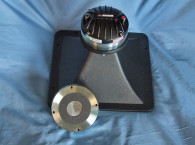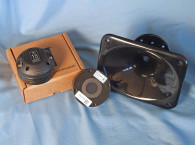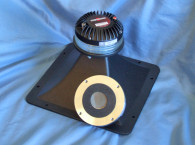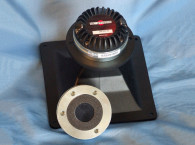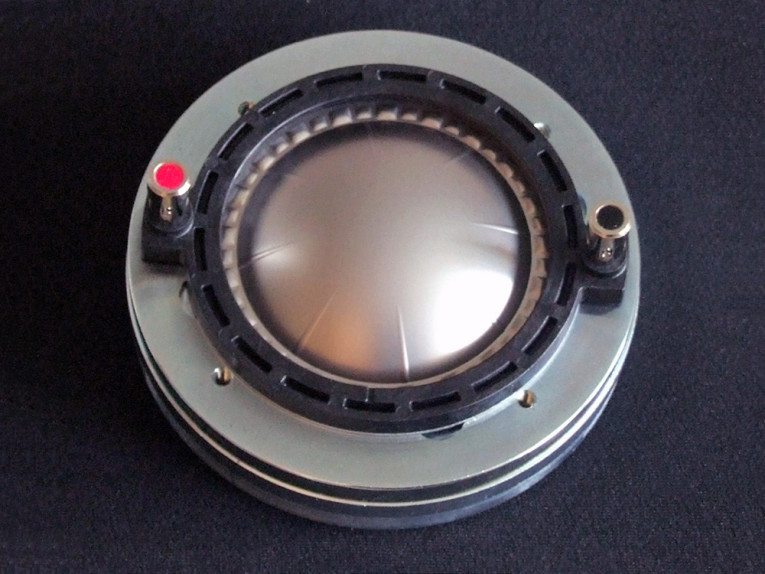
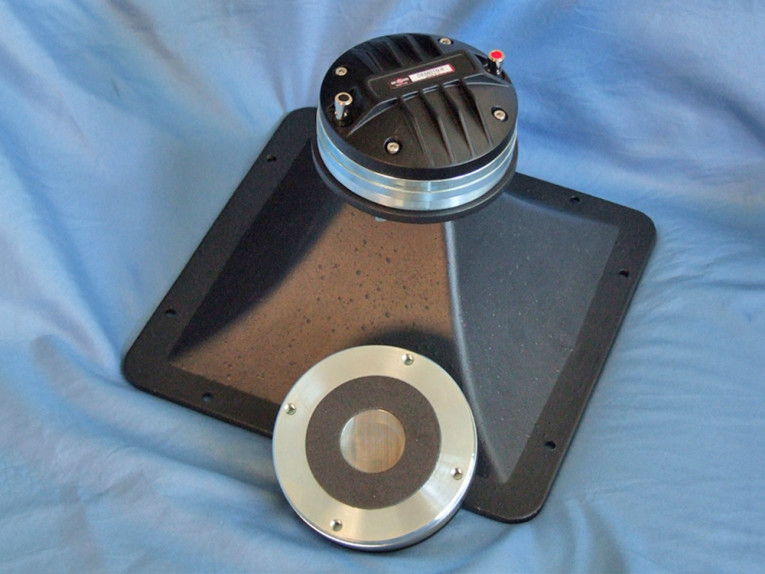
Other features include a neodymium ring magnet motor, a nominal 80 W-rated power handling (160 W continuous), a 1.2 kHz recommended crossover frequency (second-order or higher high-pass filter), and 2.83 V/1 m 108 dB sensitivity.
B&C Speakers supplied the ME90 horn for use with the DE680TN-8 (see Photo 2). This constant directivity horn has a 1.4” exit bolt on type made from cast aluminum, and provides an 80° × 60° coverage pattern and a 900 Hz cut-off frequency, making it a good match for the DE680TN-8 compression driver.
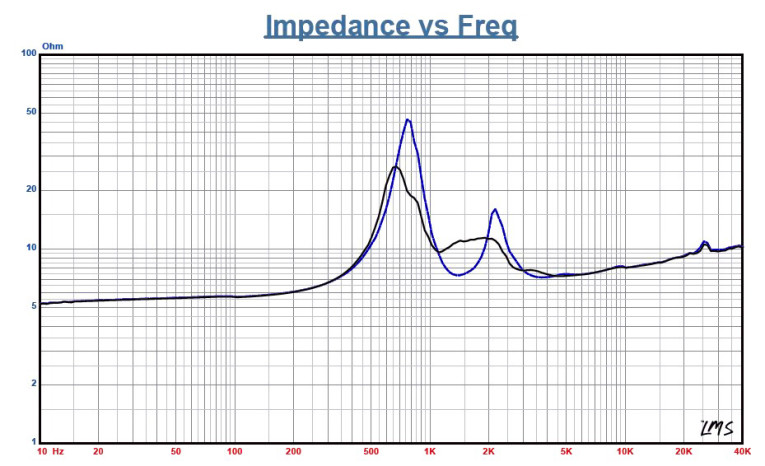
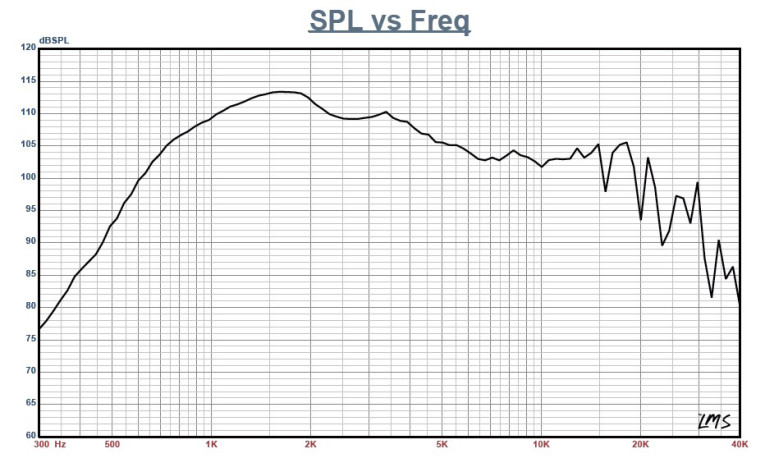
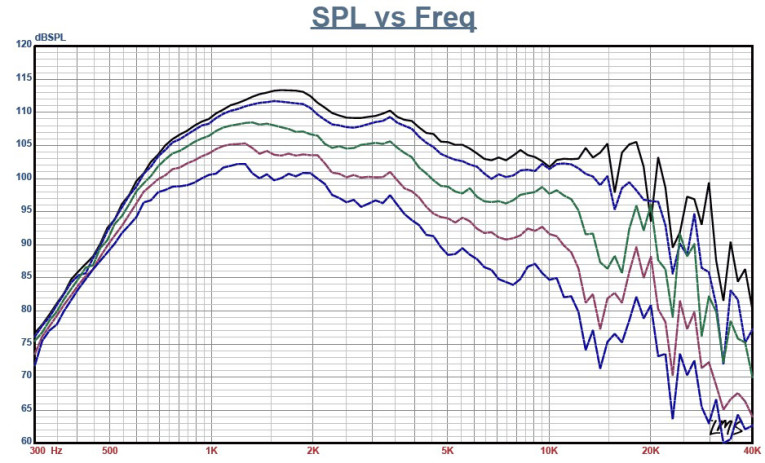
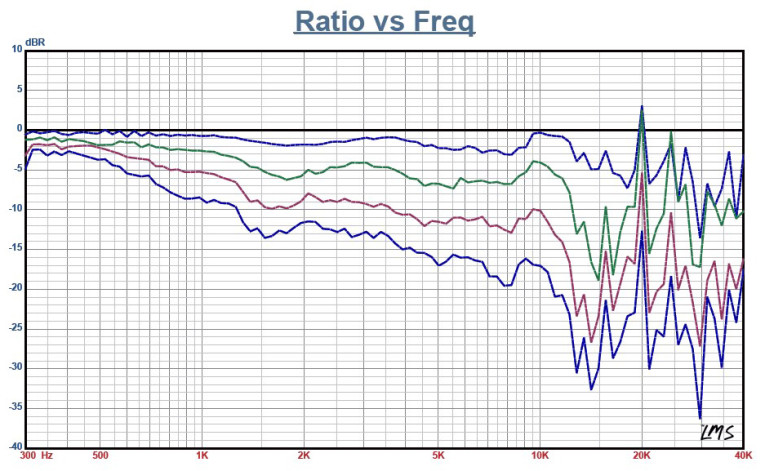
I began testing using the LinearX LMS analyzer to produce the 300-point stepped sine wave impedance plot shown in Figure 1, with the solid black curve representing the DE680TN-8 mounted on the ME90 horn and the dashed blue curve representing the compression driver without the horn. With a 5.62 Ω DCR (Re), the minimum impedance of the DE680TN-8/ME90 was 7.26 Ω and at 4.58 kHz.
For the next set of SPL measurements, I free-air mounted the DE680TN-8/ME90 combination without an enclosure and measured both the horizontal and the vertical on- and off-axis at 2.83 V/1 m, again using the LMS gated sine wave sweeps to produce both the horizontal and the vertical plane SPL data from 0° on-axis to 60° off-axis.
Figure 2 illustrates the on-axis frequency response of the compression driver/horn combination, which is smooth with no major anomalies with a declining response as frequency increases above 2 kHz, and extending to somewhat beyond 20 kHz, requiring the usual constant directivity horn equalization.
Figure 3 depicts the on- and off-axis response in the horizontal plane. Figure 4 shows the normalized horizontal plane response. Figure 5 shows the CLIO Pocket analyzer-generated 180° horizontal polar plot (in 10° increments with1/3 octave smoothing applied). Figure 6 gives the on- and off-axis to 60° response in the vertical plane. Figure 7 depicts the normalized vertical plane response. Figure 8 shows the CLIO Pocket-generated vertical plane polar plot (in 10° increments with 1/3 octave smoothing applied). Figure 9 illustrates the two-sample SPL comparison showing the two B&C Speakers DE680TN-8 compression driver samples to be very closely matched within less than 0.5 dB throughout the operating range of the transducer.
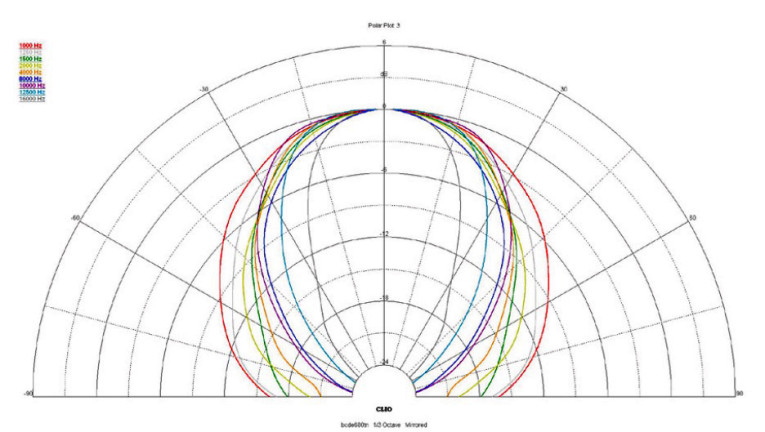
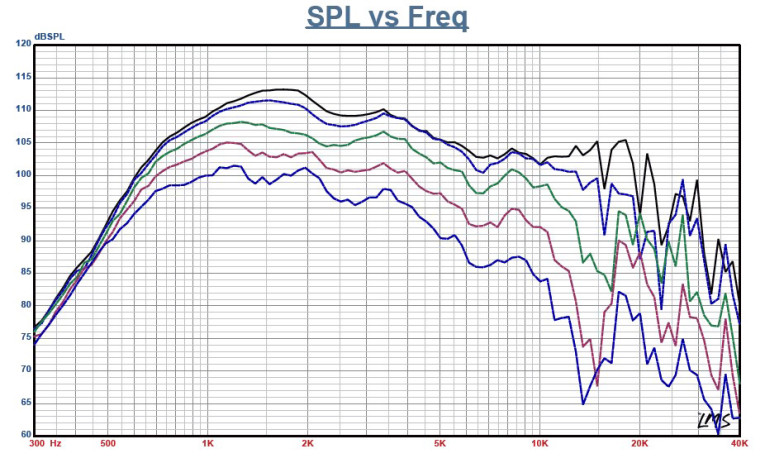


I again set up the Listen AudioConnect analyze, SoundCheck 16 software, and the Listen 1/4" SCM microphone to measure distortion and generate time-frequency plots. For the distortion measurement, I mounted the DE680TN-8/ME90 combination in free-air in the same manner as was used for the frequency response measurements. Then, I set the SPL set to 104 dB at 1 m (1.85 V) and measured the distortion with the Listen 1/4" measurement microphone located 10 cm from the mouth of the horn. This produced the distortion curves shown in Figure 10 (red curve = second harmonic, blue curve = third harmonic).
I then set up SoundCheck 16 to generate a 2.83 V/1 m impulse response for this driver/horn combination and imported the data into Listen’s SoundMap Time/Frequency software. The resulting CSD waterfall plot is given in Figure 11 and the STFT plot is shown in Figure 12.
The DE680TN-8 displays excellent performance for a fairly high power handling package, and is a nice addition to B&C Speakers' extensive lineup of ferrite and neodymium motor compression drivers. For more information about this or any other B&C Speakers product, contact B&C Speakers N.A., National U.S. Sales Office, at 220 W. Parkway, Unit 11, Pompton Plains, NJ 07444, e-mail Bennett Prescott, call (973) 248-0955, Fax (973) 248-0956, or visit www.bcspeakers.com. VC
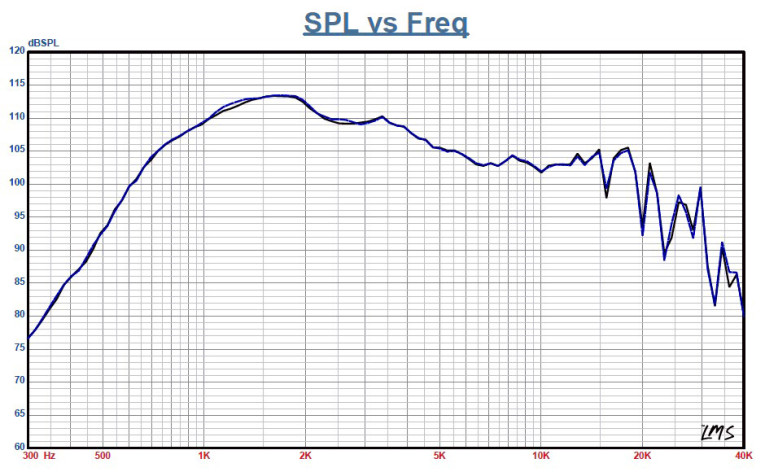
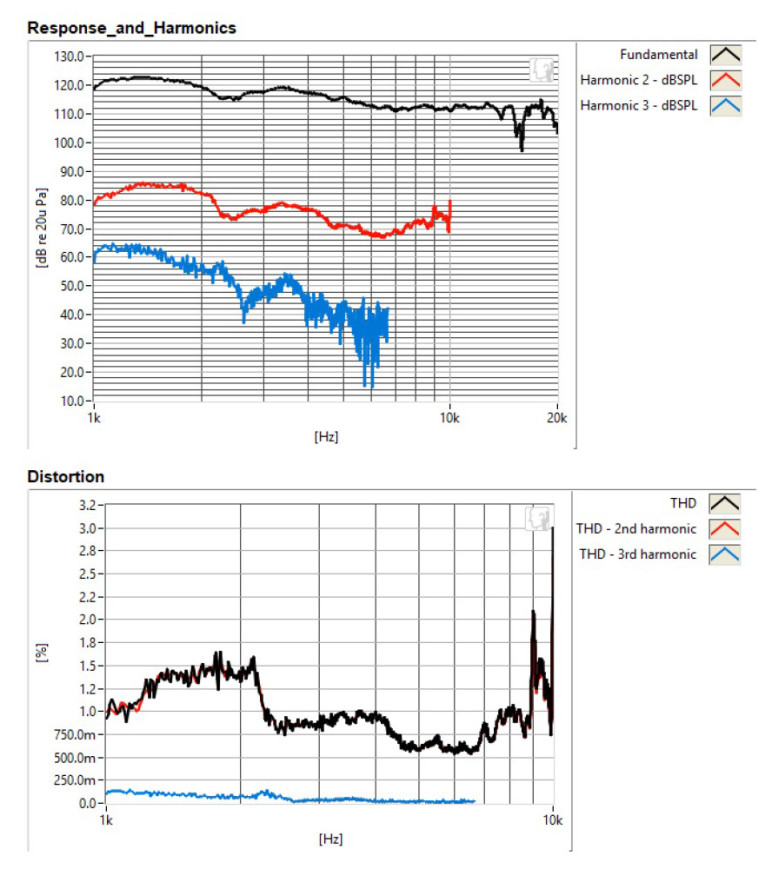
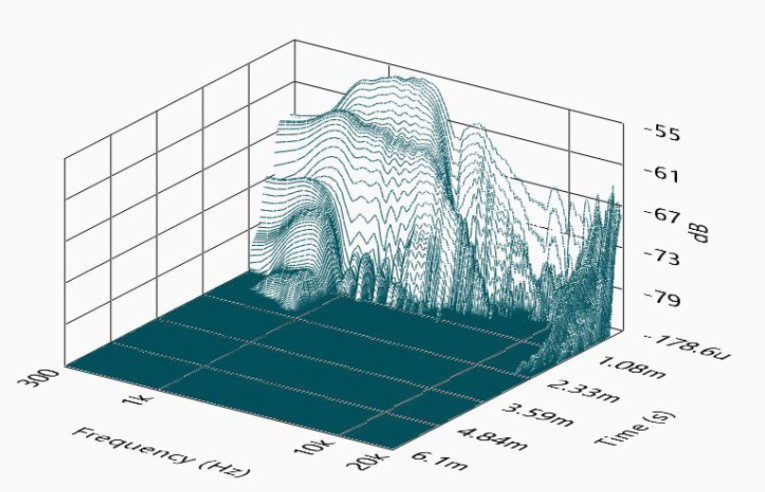
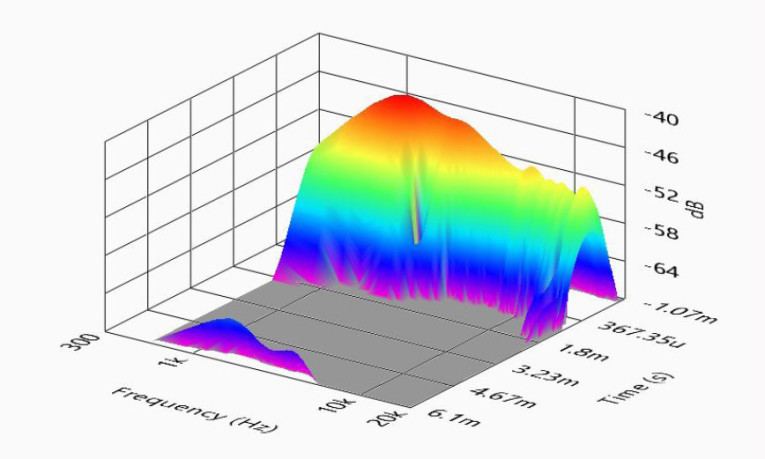
This article was originally published in Voice Coil, June 2018.




